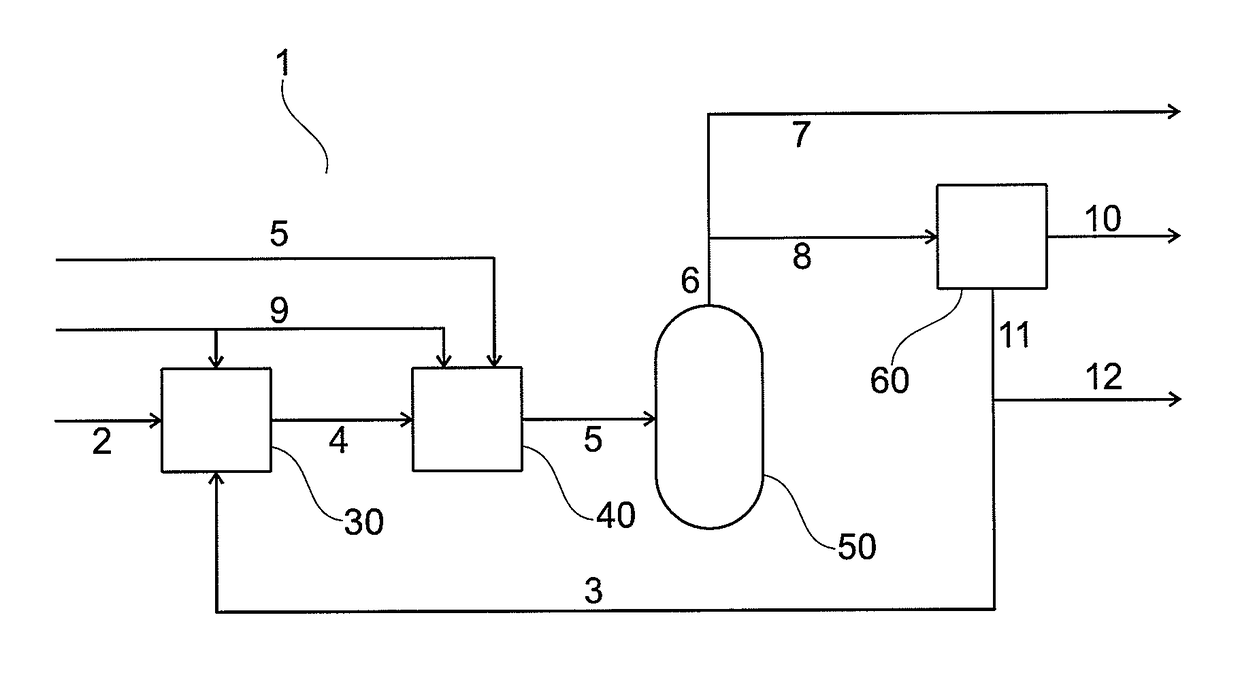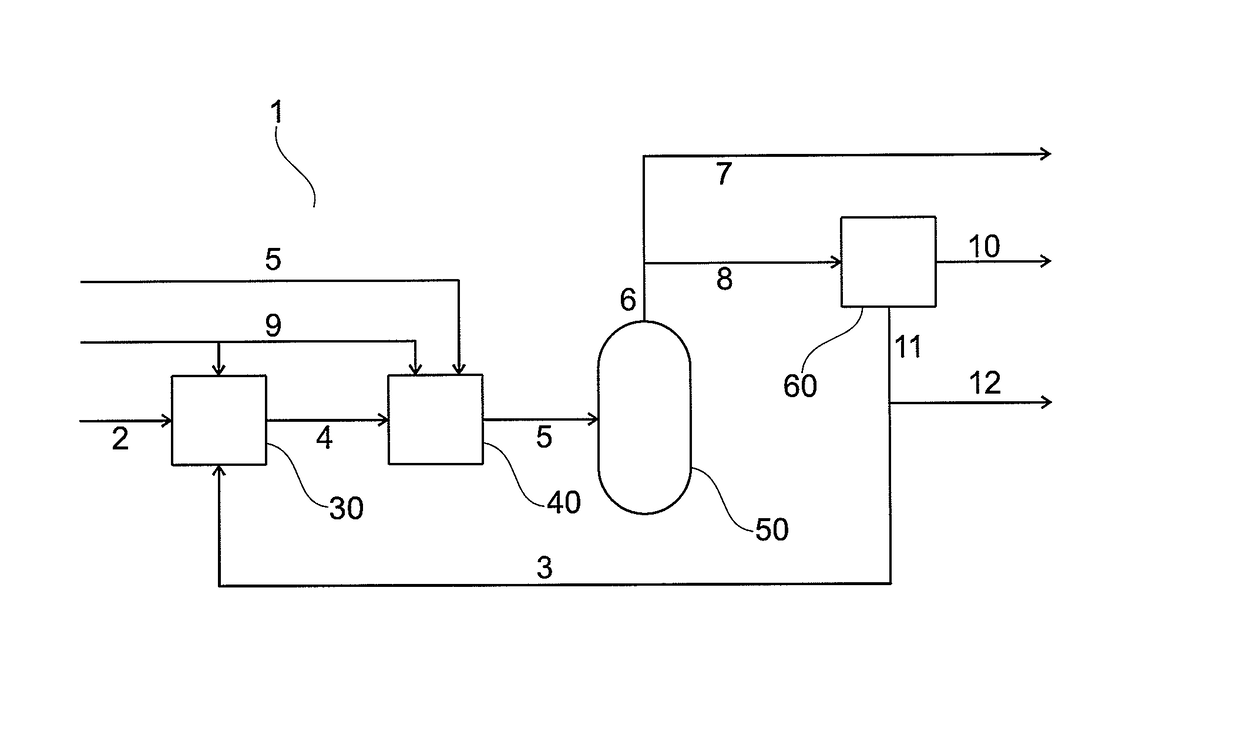Process for conversion of natural gas to liquid hydrocarbons and a plant for carrying out the process
a technology of liquid hydrocarbons and natural gas, which is applied in the direction of chemistry apparatus and processes, sustainable manufacturing/processing, metal processing, etc., to achieve energy-saving effects
- Summary
- Abstract
- Description
- Claims
- Application Information
AI Technical Summary
Benefits of technology
Problems solved by technology
Method used
Image
Examples
Embodiment Construction
[0048]In the FIGURE, a schematic process and plant 1 for producing about 3000 BPD of liquid hydrocarbon product is shown. A feed hydrocarbon stream such as natural gas 2 is passed through a desulfurization unit 30 suitably arranged as a hydrogenator followed by an absorption unit (not shown). To the natural gas 2 or to the desulfurization unit 30, more specifically to the hydrogenator therein, a hydrogen-rich stream 3 from the PSA-unit downstream is added. The desulfurized stream 4 is then mixed with steam and pre-reformed in one or more pre-reformers (not shown) before entering an autothermal reformer (ATR) 40 under the addition of oxygen 5. A raw synthesis gas 6 is withdrawn from the ATR, cooled in heat exchangers and air cooler (not shown) before passing to a water removal unit 50 such as a process condensate separator. A large portion of water is removed from this unit and the raw synthesis gas 6a, now dewatered, is split into a first raw synthesis gas 7 which represents the maj...
PUM
| Property | Measurement | Unit |
|---|---|---|
| molar ratio | aaaaa | aaaaa |
| temperatures | aaaaa | aaaaa |
| temperatures | aaaaa | aaaaa |
Abstract
Description
Claims
Application Information
 Login to View More
Login to View More - R&D
- Intellectual Property
- Life Sciences
- Materials
- Tech Scout
- Unparalleled Data Quality
- Higher Quality Content
- 60% Fewer Hallucinations
Browse by: Latest US Patents, China's latest patents, Technical Efficacy Thesaurus, Application Domain, Technology Topic, Popular Technical Reports.
© 2025 PatSnap. All rights reserved.Legal|Privacy policy|Modern Slavery Act Transparency Statement|Sitemap|About US| Contact US: help@patsnap.com


